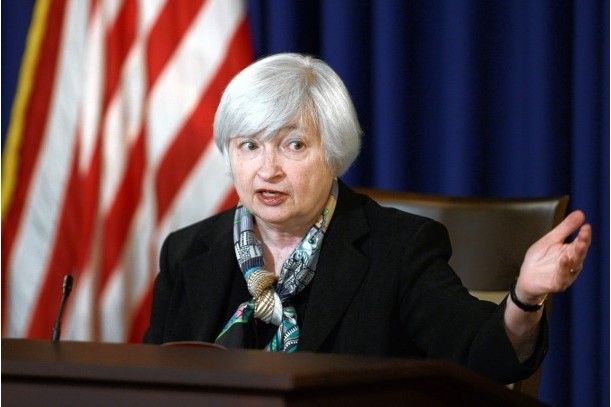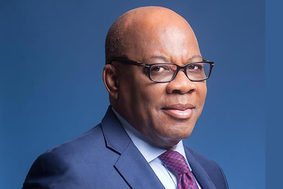Central bankers regain altitude while they can

Feature Highlight
Just as a fighter pilot who puts his plane into a steep dive to win a dogfight must gain altitude before attempting a new manoeuvre, central banks are trying to give themselves room to react in case another crisis emerges.
It can be difficult to separate the important from unimportant on any given day. Reflections mean to do exactly that – by thinking about what happened today, we can consider what might happen tomorrow.
An interest rate increase by the U.S. Federal Reserve has passed with barely a ripple of response in the public or media. A year ago, such a hike would have warranted volumes of analysis discussing the effect it might have on markets, the value of the dollar and other central banks' policies. After the announcement on June 14 of the quarter-point rise, the third over the past six months, all seems to be under control and running smoothly. In fact, a dispassionate observer might surmise that the financial crisis that began a decade ago has run its course, and that central bankers are losing their rock star status, only to return to their pre-2008 roles as low-key functionaries.
The largely unremarked-upon hike is a testament to how different the global economic climate of 2017 has been from the years before. The Volatility Index, published by the Chicago Board Options Exchange, is a measure of the perceptions of investors that is thought by some to show the amount of "fear" in the market. This year it has topped 15 just once – when the markets saw the prospect of U.S. President Donald Trump's impeachment as likely. (Low readings are bearish while high readings are bullish.) In contrast, during the past two years, the index spiked above 20 nine times, eclipsing 25 on four of those occasions.
Driving the rosier outlook, in part, has been the absence of traditional sources of worry. For instance, concerns that had been growing over the long slide of China's foreign exchange reserves ebbed when that trend reversed at the beginning of the year.
Another source of comfort for investors is the global reflation trend that manifested toward the end of 2016. Chinese producer prices, driven by oil price stabilization, had reversed their fall early last year, and, for the first time in years, China began exporting inflation, rather than deflation, to the world. That, compounded with the hope that surrounded the new U.S. president's campaign package of tax cuts and infrastructure spending, created a generally warm feeling that buoyed markets. That confidence carried into this year as the types of political worry that had previously traumatized markets, particularly anxieties over a eurozone breakup, evaporated with every electoral defeat of Euroskeptics. The accession of the more federalist Emmanuel Macron to the French presidency has accentuated this theme, while euro area growth has also picked up.
All of this positivity, however, risks obscuring the danger of some uncomfortable underlying truths. In reality, many of the aforementioned positive indicators have been falling away. Chinese producer prices reached an apex in February and have been falling ever since, dragging inflation in the developed world back down with them. Much of the early-year inflation came after oil prices bottomed out at the start of 2016. But the subsequent price recovery that drove the inflation is over, and oil prices are now where they were at the start of last year. With the energy market showing signs of oversupply, energy prices have softened. Oil production growth in the United States, Nigeria and Libya will cap energy prices and prevent them from contributing significantly to inflation.
Meanwhile, Trump appears to be backing away from the most ambitious of his tax and infrastructure proposals, and even then, the prospects of them being enacted look increasingly dim. In fact, the markets' understanding of the U.S. administration's focus is shifting toward trade policy, where potential lies more in the ability to depress markets than to buoy them. U.S. economic data have also been less positive in recent months, with gross domestic product growth slipping over the first quarter of the year.
Against this backdrop it would be easy to assume that central banks, which seem to see a global economy on the rise, have not yet caught up with the latest trends. Inflation across the developed world has tracked falling energy prices, and despite little expectation of a greater inflationary trend in the coming quarter, central banks have not drastically altered their outlooks. As the Fed announced the news of its latest rate hike, it implied that at least one more would follow this year. It also continued to lay out its plan to shrink its balance sheet, all part of an attempt to "normalize" after several years of extraordinarily low rates and bond-buying.
The European Central Bank's (ECB's) lending rate remained unchanged, but it did remove the possibility of dropping rates in the foreseeable future. The Bank of Japan also held steady, though behind the scenes it has allowed the pace of its monthly bond purchases to fall below its official target, a sign that it may be trying to quietly step back from that policy.
Meanwhile, the United Kingdom, suffering its own special circumstances after the Brexit vote of 2016, now faces a weaker pound and diminishing consumer spending. That combination, coupling rising inflation with a nascent slowdown, leaves the Bank of England in a bit of a pickle: If it raises rates to stave off inflation, it risks further throttling the economy. On June 15 its decision-making council decided to leave the rate unchanged, but its 5-3 vote made clear the extent of the bank's dilemma.
Nevertheless, any accusations of complacency leveled at the Fed, the ECB and the Bank of Japan probably aren't warranted, because there are other factors at play. In the wake of the 2008 crisis, each took unprecedented measures, allowing interest rates to drop to record lows while going on bond-buying sprees that ballooned its balance sheets in relative terms. That created a problem, because there are hard limits to how far monetary policy can go, particularly through interest rate manipulation. If rates drop far enough into negative territory, say around minus 2 percent, they will pass what is known as the zero lower bound – the point at which, considering administrative costs, it would be cheaper for depositors to withdraw their money from bank vaults and stuff it in their mattresses. This is still a theoretical threshold, but with eurozone and Japanese interest rates hovering around zero, it feels uncomfortably close.
While the extreme monetary policy enacted after 2008 was thought necessary at the time to stave off a 1930s-style depression, it has created conditions that are hard to escape. Just as a fighter pilot who puts his plane into a steep dive to win a dogfight must gain altitude before attempting a new manoeuvre, central banks are trying to give themselves room to react in case another crisis emerges. This is why the Fed is inclined to continue raising rates even if data show a less robust outlook, and the Bank of Japan is resisting a further loosening of its monetary policy, even though inflation remains at zero, far from the 2 percent target it has set.
Meanwhile, vague specks of attacking fighters have appeared on the radar. In the eurozone, Italy is working its way through an electoral law that will enable it to hold new elections. The biggest threat to the currency union would be a new government containing the radical Five Star Movement, but the surging influence of Silvio Berlusconi's Forza Italia and the separatist Northern League could also spell trouble. In the United States, alongside impeachment risks and slowing growth, there are signs of a bubble in the auto loan industry and in overheated technology stocks, both of which could present a sudden setback to the economy. And once China's upcoming National Party Congress concludes, Beijing would be free to launch a concerted effort to tackle massive debt levels, an action that could disrupt the global economy.
Far from showing complacency, then, the current hawkishness of the world's central banks might be displaying prudence in taking the opportunity provided by clear skies to gain as much altitude as they can, in case more drastic action is needed in the future.
“Central Bankers Regain Altitude While They Can” is republished with the permission of Stratfor, under content confederation between Financial Nigeria and Stratfor.
Other Features
-
The best sites to buy and sell Bitcoin in Nigeria: A comprehensive ...
Buying and selling BTC doesn’t have to be a hassle. Check out to best sites to buy and sell Bitcoin in Nigeria ...
-
At 50, Olajide Olutuyi vows to intensify focus on social impact
Like Canadian Frank Stronach utilised his Canadian nationality to leverage opportunities in his home country of ...
-
Reflection on ECOWAS Parliament, expectations for the 6th Legislature
The 6th ECOWAS Legislature must sustain the initiated dialogue and sensitisation effort for the Direct Universal ...
-
The $3bn private credit opportunity in Africa
In 2021/2022, domestic credit to the private sector as a percentage of GDP stood at less than 36% in sub-Saharan ...
-
Tinubunomics: Is the tail wagging the dog?
Why long-term vision should drive policy actions in the short term to achieve a sustainable Nigerian economic ...
-
Living in fear and want
Nigerians are being battered by security and economic headwinds. What can be done about it?
-
Analysis of the key provisions of the NERC Multi-Year Tariff Order ...
With the MYTO 2024, we can infer that the Nigerian Electricity Supply Industry is at a turning point with the ...
-
Volcanic explosion of an uncommon agenda for development
Olisa Agbakoba advises the 10th National Assembly on how it can deliver on a transformative legislative agenda for ...
-
Nigeria and the world in 2024
Will it get better or worse for the world that has settled for crises?
Most Popular News
- NDFF 2024 Conference to boost Nigeria’s blue and green economies
- IFC, partners back Indorama in Nigeria with $1.25 billion for fertiliser export
- CBN increases capital requirements of banks, gives 24 months for compliance
- CBN settles backlog of foreign exchange obligations
- Univercells signs MoU with FG on biopharmaceutical development in Nigeria
- Ali Pate to deliver keynote speech at NDFF 2024 Conference












